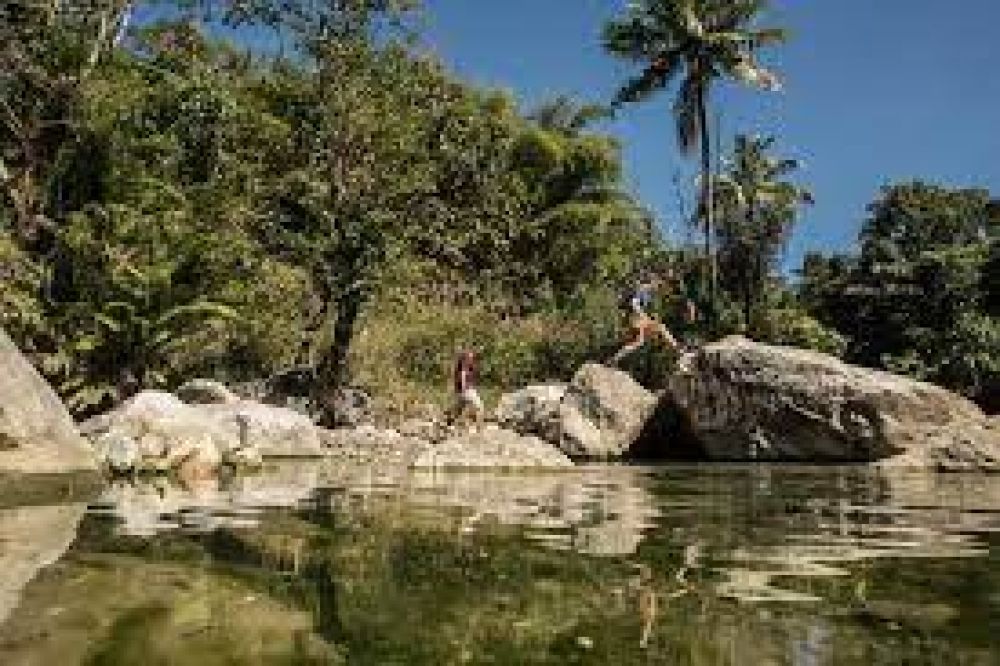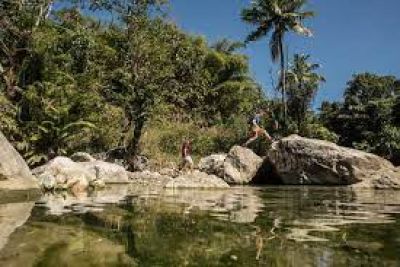

Mount Ramelau, also known as Tatamailau, stands as Timor-Leste's highest peak at approximately 2,986 meters above sea level. It is not only a prominent natural landmark but also holds significant cultural and religious importance for the local Timorese. Climbing Mount Ramelau offers adventurers an opportunity to experience breathtaking views, encounter diverse flora and fauna, and immerse themselves in the spiritual atmosphere that encompasses the mountain. Each step taken on the ascension through the mist-covered trails is rewarded with increasingly spectacular panoramas. The hike can be demanding due to the elevation and the rocky terrain, but it's considered a pilgrimage by many locals, especially during important religious dates such as Easter. At the summit, a large statue of the Virgin Mary overlooks the mountains—a serene spot to rest and reflect. Trekkers can expect to be greeted by a stunning sunrise if they undertake the climb early in the morning.
The energetic and vibrant markets of Manufahi offer a fantastic way to delve into the day-to-day life of Timor-Leste's local communities. These markets are abundant with fresh produce, colorful textiles, and a variety of handcrafted goods that reflect the ingenuity and cultural richness of the country. As you weave through the throngs of local shoppers and vendors, you're likely to come across a diverse selection of fruits, vegetables, and spices, as well as the catch of the day for seafood lovers. Manufahi Markets provide a sensory overload with the sounds of bartering, the sight of intricate Timorese patterns, and the scent of local delicacies wafting through the air. Engaging with stallholders is more than just a transaction; it's a chance to learn about their way of life, making it a rewarding cultural exchange as well.
Timor-Leste's expansive coastline boasts pristine beaches that are often untouched and free from the hustle and bustle of mainstream tourist destinations. In Same, one can explore the coast by engaging in beachcombing, a leisurely yet rewarding activity. As you stroll along the sandy shores, you'll encounter a diverse range of shells, sea glass, and potentially small artifacts carried ashore by the tides. The serene sounds of the waves and the warm tropical breeze create a soothing backdrop for this relaxing pastime. The coastal areas near Same are also excellent for catching a glimpse of traditional fishing techniques and interacting with fishermen returning with their daily catch. It's not only an opportunity to collect shells but also to collect memories of the serene East Timorese coastline.
A visit to the natural hot springs near Same provides a chance to unwind and enjoy the therapeutic qualities of geothermally heated waters. These naturally occurring springs are situated amidst lush tropical vegetation, providing a tranquil escape and an intimate connection with nature. The hot springs are reputed to possess healing properties, and a dip in the warm waters can be a rejuvenating experience for both body and soul. The trek to the hot springs takes visitors through picturesque landscapes, with opportunities to spot local flora and fauna along the way. Depending on the exact location of the hot springs, some may feature rudimentary facilities, while others are entirely untouched, allowing for a more rustic and authentic experience.
The Wetar Strait, lying between the islands of Timor and Wetar, holds a treasure trove of marine biodiversity that makes for an unforgettable snorkeling adventure. The crystal-clear waters are home to vibrant coral reefs teeming with a variety of fish and marine life. Same, with its proximity to such rich marine environments, provides an ideal launch point for exploring these underwater wonders. Snorkelers can expect to see colorful parrotfish, angelfish, and perhaps even playful dolphins or sea turtles gliding gracefully through the water. These snorkeling spots are often not crowded, offering a sense of seclusion and an intimate encounter with sea life. Local guides can provide equipment and lead visitors to the best spots for an unparalleled aquatic experience.
Nino Konis Santana National Park is a haven for bird enthusiasts, boasting a rich array of birdlife, some of which are endemic to the island. The park itself spans a large area with different habitats, including lush forests, coastal regions, and savannah landscapes, all providing unique bird-watching opportunities. While not in Same itself, the park is accessible from the town and promises sightings of species such as the Timor Green Pigeon, the Timor Imperial Pigeon, and other exotic birds. Bird watching here is not just about ticking off species; it's also about appreciating the chorus of bird calls and the chance to observe these creatures in their natural habitat. Seasoned guides can help locate and identify the various species, making for an educational and enjoyable day spent amidst the beauty of Timor-Leste's wilderness.
Although Atauro Island is not directly part of Same, it's a must-visit destination for diving enthusiasts while in Timor-Leste. Accessible by a boat ride from Dili, Atauro Island offers some of the most pristine and biodiverse waters in the world, with visibility often exceeding 30 meters. Diving here, one can explore steep drop-offs, coral gardens, and an astonishing variety of marine life, including large pelagic fish, vibrant coral species, and myriads of smaller, colorful reef inhabitants. The waters around Atauro are also home to several species of whales and dolphins, which can often be seen from the boat. Diving in Atauro is a bucket-list activity for underwater adventurers and presents an excellent opportunity to support sustainable tourism initiatives led by the local communities on the island.
The lush, rolling hills of the Maubisse Highlands offer a serene setting for trekking enthusiasts. Not far from Same, this area is characterized by verdant terraced fields, traditional villages, and panoramic vistas of the surrounding mountains. Trekking through Maubisse allows visitors to experience the cool, crisp highland air and gaze upon scenic landscapes that showcase the tranquil beauty of rural Timor-Leste. It's also an opportunity to engage with the local Mambai people and learn about their customs and way of life. Many of the trails in Maubisse are suitable for a range of fitness levels, and guided treks can provide insight into the natural and cultural history of the highlands. Engaging in a trek here supports the local community and offers a deeper understanding of Timor-Leste beyond the coastal areas.
Timor-Leste's mountainous regions, including areas around Same, are known for their superb coffee plantations due to the ideal growing conditions provided by the altitude and climate. Coffee tours offer visitors an immersive experience into the world of coffee cultivation and production. These tours often begin with a walk through the coffee fields, where one can learn about the planting, maintenance, and harvesting of the coffee cherries. Visitors also gain insight into the lives of the coffee farmers and the challenges they face. The process of drying, roasting, and grinding coffee beans is demonstrated, culminating in a tasting session where one can savor the rich, distinct flavor of Timorese coffee. A tour not only provides a caffeinated education but also an appreciation for the hard work that goes into every cup of coffee enjoyed around the world.
The Uma Lulik, or sacred house, is central to Timorese culture, symbolizing the ancestral and spiritual beliefs of the local population. In Same and throughout Timor-Leste, some communities offer visitors the chance to experience traditional customs and rituals at an Uma Lulik. These experiences can include traditional music and dance performances, an explanation of the symbolism behind the Uma Lulik's construction, and an opportunity to partake in Timorese cuisine. Guests sometimes participate in customary practices such as tais weaving or corn pounding, providing a hands-on experience of Timorese heritage. Engaging with these ancient cultural elements in a respectful manner encourages cultural preservation and provides a unique glimpse into the soul of Timor-Leste.
